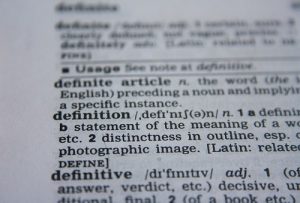R6 Siege:
Constructive Feedback
Proven ways for Rainbow Six Siege leaders to give constructive feedback!
“Feedback is the breakfast of champions.”
- Ken Blanchard
Constructive Feedback
Table of Content
Constructive Feedback
Definition

Benefits of
Constructive feedback
Feedback is an excellent tool at a leader’s disposal for helping teammates with improvement in R6 Siege.
The main benefits of constructive feedback in Siege are:
Clarifies expectations
Deepens relation within the team
Increases trust and confidence
Improves overall team performance in R6 Siege
All of the above pros of constructive feedback are vital to a team’s success in the Rainbow Six Siege. Just like a chain, your team is as strong as your weakest link – whether it is an IGL, strategy, or fragging player.
Most of us share two characteristics when it comes to evaluation.
First, we are usually very good at evaluating other people.
Second, we generally suck at self-evaluation.
We tend to hold inaccurate views about ourselves and our skills, even as an R6 Siege player. In some cases, such beliefs can also be disconnected from reality.
Therefore, having other people to point our strengths and weaknesses is extremely helpful. Of course, we need to trust the person who gives us constructive feedback. Without trust, we may not take it for what it is – feedback, not a judgment.
How-TO Give
Constructive feedback

It is easier said than done, especially the latter part. We are all sensitive to perceived criticism, and our skills in Rainbow Six Siege are not an exception!
The exact way in which you will give constructive feedback to your team members in Rainbow Six Siege will differ. If you are new to the leadership, then it will take you a while to train yourself in this area.
The best way to become good at it is to get fundamentals right and then practice, practice… and practice.
Considering that you’re reading this article, I assume the first part you’ve got covered😉
Now the second crucial point will be for you to practice and experiment. Observe how people react and test different ways of trying to reach them. Mastering this skill will inevitably take time. Be patient and don’t rush the process!
Below you will find a list of main tips that I recommend to consider in your road to becoming an effective leader of the Rainbow Six Siege team.
setting the right mindset:
Assume positive intent
“NoobMaster69, I am sure you want to win the match as much as we all do…“
Don't be negative
- Imagine a positive outcome of the conversation
- Think about good sides and actions of your teammates
Start Well:
Begin with your own mistakes
Here is what you will achieve by doing so:
- Minimizing chances of acting like a superior player in Rainbow Six Siege
- Increasing teammates attention
Positive feedback and honest praise first
As mentioned earlier, the primary reaction you want to avoid is the feeling of being judged in the other person. Starting with positive feedback about them as a person or an R6 Siege player sets a better tone and helps the person relax. This, in return, makes them more likely to consider your feedback as valid.
Remain Constructive:
Focus on issue resolution, not problem
The problem lies in the past.
Address specific behaviors, avoid broad judgments
Don't praise the ability, praise the effort!
Now, let me explain this concept further:
Make it a two-way conversation
- help you see their point of view – new idea and perspective
- provides insight into how the other person feels – you learn about them
- increasing their feeling of importance and being listened to – good rapport
How-TO
Receive feedback

Avoid defensive instincts
Ask for specifics
Ask for specifics
Private vs. public
Feedback

- teammates’ personalities
- the chemistry within the team
- the root of the issue
- expected outcome
1 on 1
PROS:
- Helps judge a person’s morale
- Deepens a personal connection with the teammate
- A team member is less likely to be defensive
- Better form to understand their point of view
CONS:
- Limits interaction within the team
- May not lead to improvement on a team level
- Limited view on the issue and solutions
WHEN TO USE?
- Teammate is not taking negative feedback very well
- Sensitive topic
- Improvement needed on a person’s level
- Chemistry issues within the team
EXAMPLE:
TEAM DISCUSSION
PROS:
- Increases accountability between teammates
- Gives an overview of chemistry within the team
- Potential for more ideas for improvement
- Helps develop as a team
CONS:
- Can escalate the issue
- People may try to save face publicly
- Could lower the trust of impacted teammates
WHEN TO USE?
- High chemistry within the team
- Team level improvement is the main goal
EXAMPLE:
To sum up:
SUMMARY:
- The goal of constructive feedback is to help others become better players and reach the goal as a team
- Constructive feedback focuses on the resolution, not on the problem
- Feedback provides many benefits, such as building trust, confidence, deepening team’s chemistry and improving overall performance
- You are probably better at evaluating others than yourself, and probably so are others
- When giving feedback, avoid at all cost triggering defensive mechanisms in another person
- Start with your own mistakes, praise aspect the person does well, and only then highlight area for improvement
- Be specific and non-judgemental
- Don’t make it a monologue
- When receiving feedback, avoid taking it personally and try to learn
- Praise teammates publicly
- Discuss sensitive topics privately – 1on1
Continue your journey to
Leadership Mastery in Siege
Get the fundamentals right and be truly effective in the leadership of the R6 Siege team!
Are you using feedback to benefit your team?
Learn how to give and receive feedback



